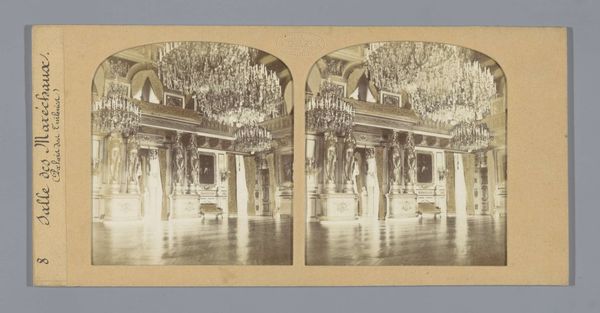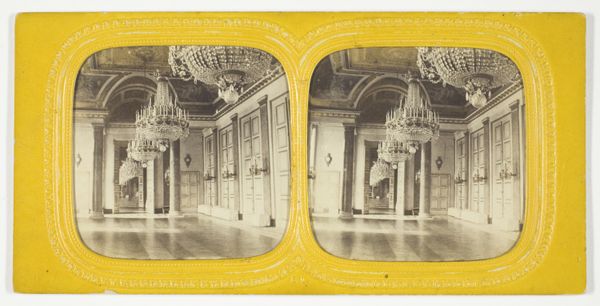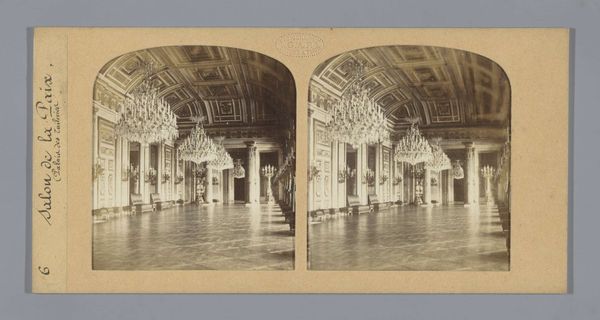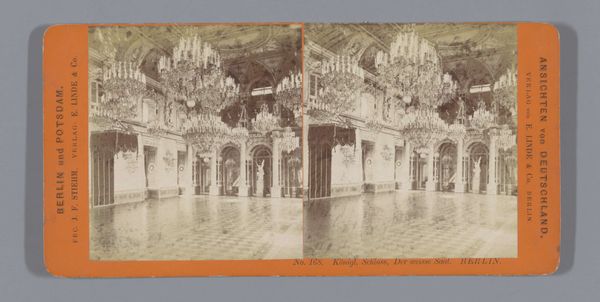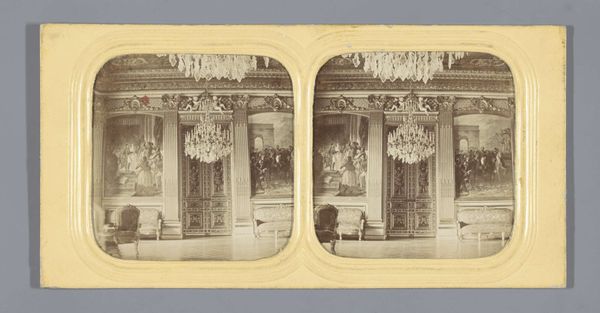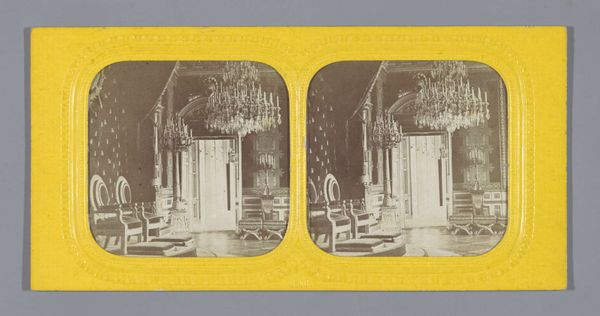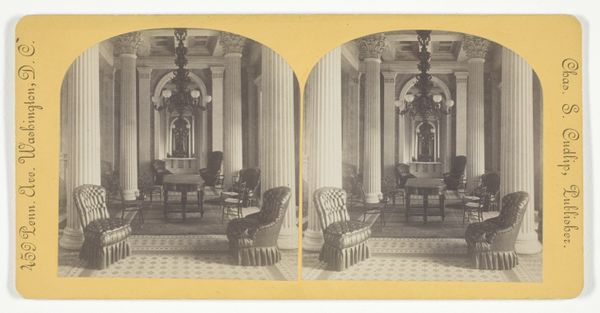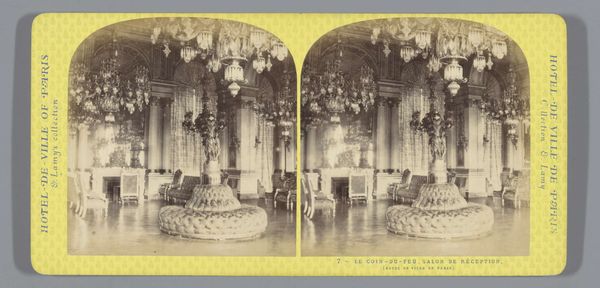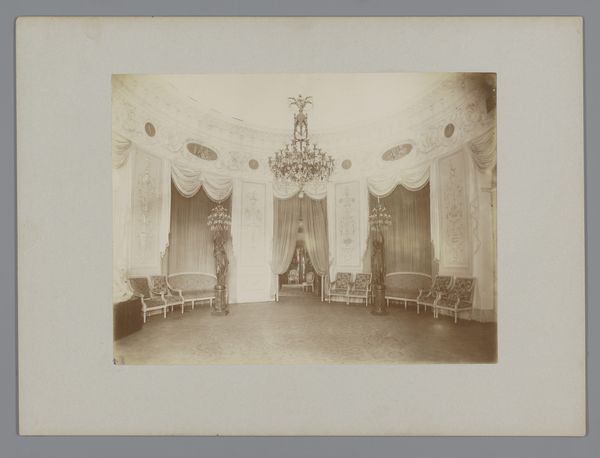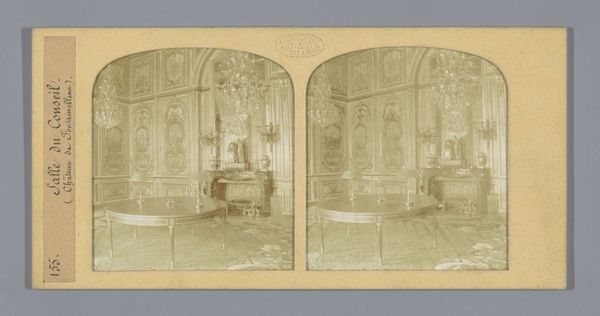
silver, print, photography, albumen-print
#
neoclacissism
#
16_19th-century
#
silver
# print
#
photography
#
19th century
#
men
#
cityscape
#
history-painting
#
albumen-print
Dimensions: 8 × 7.5 cm (each image); 8.9 × 17.8 cm (card)
Copyright: Public Domain
Curator: Alright, let’s immerse ourselves in a slice of history with "East Room, White House," a late 19th-century albumen print crafted by Chas. S. Cudlip, now residing here at The Art Institute of Chicago. What's your first take on this captured space? Editor: A sort of hushed opulence. You can almost hear the echoes in that room, like a ghostly cotillion frozen in time. It’s visually…static, but charged with potential. Do you get a sense of that stillness? Curator: I do, certainly! Looking at the photograph, it strikes me as an exercise in neoclassical idealism, all rigid columns and ornate trim rendered in painstaking detail. Note how the symmetrical composition funnels your gaze into the background. I feel drawn to the elaborate carpet design as well! Editor: I hadn’t consciously registered it, but that deliberate perspective—it really intensifies the emptiness. But those chandeliers, hanging like crystal clouds, they contradict the overall formality a little, they infuse the space with some, forgive me, sparkle. They feel hopeful, despite the otherwise stern neoclassical environment. Curator: That's beautifully put. Consider that albumen prints were hugely popular during this era, granting greater detail and stability compared to earlier photographic processes. And this being the East Room, historically, the space was where many events of national importance unfolded: balls, receptions, signings. The photograph therefore exists in a space where grandeur is a state symbol, not simply a representation of power and wealth. Editor: Right! So, we’re looking at more than just a pretty picture; it's a deliberate construct, a projection of authority and enduring legacy caught by a photographic lens, then further ossified in silver. I feel somewhat uncomfortable now by the sheer deliberateness of this staged vista; is there space to rebel here, can the mind breathe easily? Curator: Photography really evolved during this era! It moved from mere documentation to its modern role today. So, to echo the historical period: not at all! Perhaps by dwelling in this work we should attempt to see where those subtle opportunities may arise in everyday encounters, however. Editor: Food for thought, indeed! Thank you, as always! Curator: Until our next auditory experience!
Comments
No comments
Be the first to comment and join the conversation on the ultimate creative platform.
